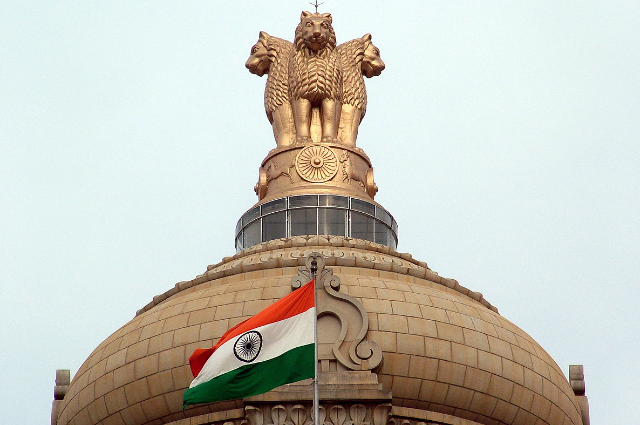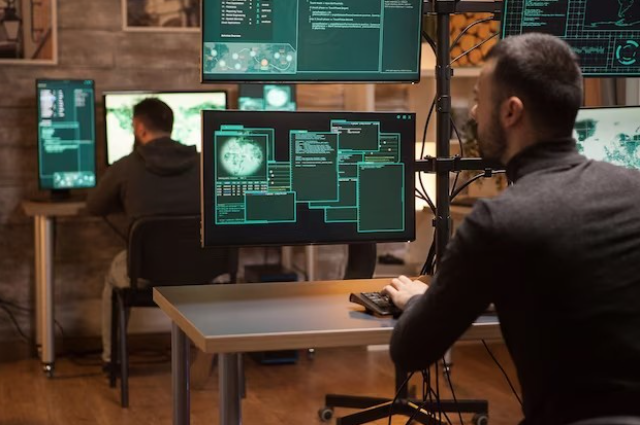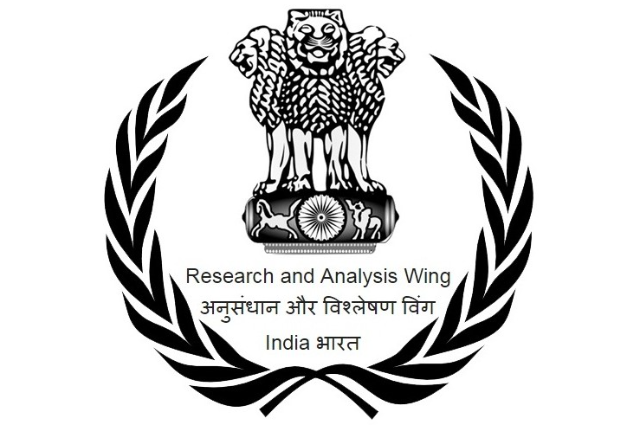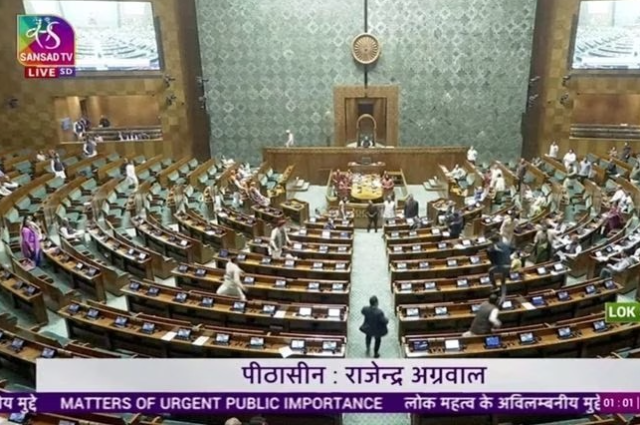Introduction
On the 13th of December, 2023, two trespassers gained entry into the Lok Sabha House through the public gallery. One of them leaped onto the tables where the Members of Parliament (MPs) were situated and discharged a smoke canister emitting a yellow hue. Simultaneously, the other individual purportedly shouted slogans. This commotion and disruption prompted the abrupt suspension of the session due to chaos and panic among the members. Meanwhile, outside the premises, two additional individuals were apprehended for engaging in same actions.
The event took place around 1 PM in the Lok Sabha, the People’s House of the Indian Parliament, situated in the newly constructed parliament building. It concurred with the 22nd anniversary of the 2001 Indian Parliament attack. After the incident, four persons were taken into custody. Two were captured within the Parliament complex, and the remaining two were apprehended near the transport Bhavan adjacent to the Parliament premises. Investigations unveiled that the released smoke by the individuals was non-hazardous and aimed at creating a stir.
The occurrence triggered extensive criticism and prompted significant inquiries into the security measures of the Parliament compound. Lok Sabha speaker Om Birla organised a gathering with the Members of Parliament (MPs) to reassess the security protocols and enforce more stringent measures to avert any reappearance of such incidents.
Intelligence Committee roles & responsibilities
The function of the Secretariat, as represented by the Joint Intelligence Committee (JIC), involves the comprehensive examination of intelligence information sourced from the Intelligence Bureau, RAW, Military, Naval, and Air Intelligence Directorates. The JIC operates under the Cabinet Secretariat and constitutes the third tier within the National Security Council (NSC) framework.
The Intelligence Bureau stands as India's Domestic intelligence agency
- Background
Initially established as the Central Intelligence Bureau in 1947 under the Ministry of Home Affairs, its historical roots trace back to 1885. Major General Sir Charles Metcalfe MacGregor was appointed as the Quartermaster General and head of the Intelligence Department for the British Indian Army in Shimla. The primary objective during the late 19th century was to survey Russian troop movements in Afghanistan, amid concerns about a potential Russian incursion into British India through the North-West.
In 1921, as a response to the rise of Indian anarchist activities in England, a new governmental surveillance and monitoring entity called the Indian Political Intelligence (IPI) was established. It was jointly managed by the India Office and the Government of India. The IPI reported to both the Secretary of the Public and Judicial Department of the India Office and the Director of the Intelligence Bureau in India, maintaining close ties with Scotland Yard and MI5.
- Duties & Commitments
Operating under a cover of secrecy, the Intelligence Bureau (IB) is entrusted with gathering intelligence within India and executing counter-intelligence and counter-terrorism operations. Staffed predominantly by officers from law enforcement agencies, notably the Indian Police Service, and supplemented by military personnel, the IB's duties extend beyond domestic intelligence, focusing on intelligence gathering in border regions, as outlined in the 1951 recommendations of the Himmatsinhji Committee (also known as the North and North-East Border Committee). Before India gained independence in 1947, this task was handled by military intelligence organizations. Additionally, since 1951 the IB has been assigned various external intelligence duties.
- Intelligence Bureau facilitates the exchange of intelligence
Understanding the mysterious operations of the IB remains mostly speculative. One confirmed duty of the IB involves approving licenses for amateur radio enthusiasts. Additionally, the IB facilitates the exchange of intelligence among different Indian intelligence agencies and law enforcement. It also provides essential security clearances for Indian diplomats and judges before their official appointments. Occasionally, IB officers engage with the media during critical situations. Moreover, there are reports that the IB intercepts and opens roughly 6,000 letters daily.
The Bureau holds the authority to conduct monitoring without requiring a warrant. Unfortunately, this provision is often abused by governing administrations to surveil their political adversaries, at times levying false criminal accusations against them. Furthermore, the IB claims several authors who correspond with various newspapers and magazines to advocate the government's stance. Recent reports suggest the government is contemplating restrictions on warrantless tapping.
- Failures to anticipate the Sino-Indian War of 1962
The Intelligence Bureau (IB) served as India's intelligence agency for both internal and external matters. However, following the failure of intelligence agencies to anticipate the Sino-Indian War of 1962, the IB underwent restructuring. Its responsibility for external intelligence was transferred to the newly established Research and Analysis Wing (RAW), while the IB retained its focus on internal intelligence.
Research and Analysis Wing (R&AW)
The Research and Analysis Wing (R&AW) stands as India's primary external intelligence agency under the Cabinet Secretariat. Established as an independent entity in September 1968, it emerged from the Intelligence Bureau, which previously handled both internal and external intelligence. Its main headquarters are situated on Lodhi Road in New Delhi.
- Description, Setup, and Funding
Information regarding the R&AW remains predominantly speculative. Compared to intelligence agencies of similar scale, the R&AW maintains a notably low media presence. It directly reports to the Prime Minister's Office (PMO), and its operational framework and organizational structure are not disclosed to the Parliament.
The budget and financing of R&AW are not openly discussed in public arenas. Some reports suggest that a portion of its funding originates from "discretionary grants" allocated to various governmental entities, particularly Indian diplomatic missions and representatives overseas.
Assessments of its yearly budget range significantly among experts, from $16 million to $145 million. One outcome of such a low-key existence is the considerable challenge in evaluating R&AW's efficacy and performance. Evaluations span a wide spectrum, from being labeled, "highly efficient and proficient" to being criticized as "ineffective and plagued by internal politics."
The R&AW personnel are recruited on deputation from state police forces and other intelligence agencies. The Research Analysis Service, established during the era of Indira Gandhi, represents the All India Level Service of R&AW.
Formed in 1968, R&AW primarily concentrated on Pakistan, initially prompted by reports of Pakistan providing arms to Sikh militants and offering refuge and training to insurgents in Pakistan. After its inception, RAW was entrusted with numerous missions including monitoring political and military developments in neighbouring countries that impact Indian national security. Consequently, RAW pays significant attention to Pakistan and China, traditional rivals of India.
The beginning of the 21st century has witnessed a critical rise in global terrorism, impacting nations worldwide, regardless of their status or influence. India, for at least the last four decades, has been particularly vulnerable to this form of warfare. Considering the evolving threats, both conventional and unconventional ; the world transforming into a global village with easier access to technology terrorism stands out as one of India's most difficult internal security challenges.
Parliament breach of 13th December was an attack on India’s democratic pillar
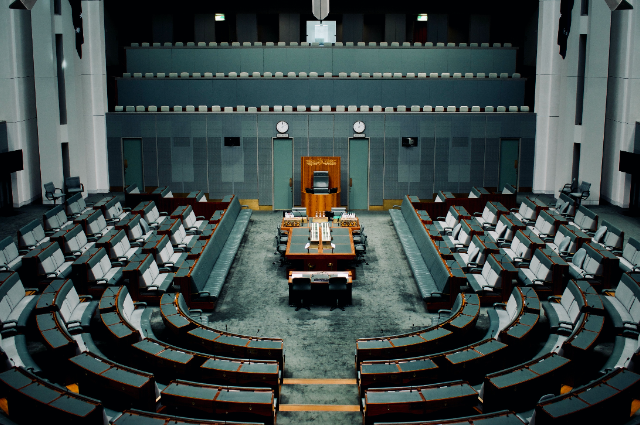
The security breach at Parliament on December 13, 2023, has been in highlight for the past 15 days. Despite the incident being non-threatening, it's crucial to acknowledge it as a significant failure that cannot be disregarded. This occurrence highlights the weaknesses in the complicated security setup of the modern parliamentary complex. Consequently, an immediate investigation is necessary accompanied by stringent measures against the accountable individuals and a comprehensive review to address the vulnerabilities.
Governments or leaders shouldn't manipulate what gets documented or omitted during parliamentary sessions. Such recordings shouldn’t be biased to portray specific leaders or governments favourably. The investigation into the incident should uncover the truth behind the actions of these young Indians in Parliament. Regardless of the investigation's outcome and whoever orchestrated this incident, the fact that it occurred during the current government's tenure will be a significant part of the nation's history. The government cannot evade accountability.
Undoubtedly, the opposition today feels intimidated and overpowered by the ruling party due to its dominant majority and assertive leadership. Politically, the ruling party outperforms the opposition, which often finds itself on the defensive. The BJP’s leadership exploits this weakness in the opposition fully. Consequently, the opposition frequently fails to engage the government in substantive debates on critical matters; instead, it gets entangled in trivial issues that contribute nothing to governance or the nation. Regrettably, the responsibility lies with the opposition to bring about significant changes by finding legitimate means within parliamentary regulations to become more impactful.
If they resort to hooliganism or unparliamentary conduct as observed recently, they will face the consequences as per parliamentary protocols. Any hope that the ruling party will handle them leniently is wishful thinking. Given the opposition's fragile position in Parliament, it's crucial that they exercise caution and adhere to parliamentary rules and decorum.
Recalling the Parliament attack of 2001
The 2001 Parliament attack in India marked a grave breach of security within one of the nation's most fortified places. This assault, which occurred on December 13, 2001, could have resulted in far greater devastation if not for a blend of courageous actions and fortunate circumstances that worked in India's favour.
On the anniversary of the attack, a security breach within the Lok Sabha renewed memories of the 2001 incident. Intruders managed to enter the Lok Sabha, deploying smoke canisters suggestive of the past attack. However, unlike the 2001 attack that involved gunfire a suicide bomber and casualties, this recent breach was limited to the deployment of smoke.
During the 2001 attack, a group of five terrorists affiliated with Jaish-e-Mohammed and Lashkar-e-Taiba launched a suicide bomber mission, armed with Kalashnikov rifles and grenades. They intended to wreak havoc within the Parliament premises. Tragically, a human bomb detonated near the Parliament House, leading to casualties among security personnel and innocent bystanders.
Despite the breach of the initial security ring, the swift response of subsequent security layers prevented the terrorists from infiltrating the building and causing further harm. At one critical point, the attackers were dangerously close to accessing the office of the then Rajya Sabha Chairman, Vice-President Krishan Kant. However, the quick action of shutting doors stopped their entry.
The terrorists, arriving in a white Ambassador vehicle bearing a Parliament access sticker, attempted to breach the premises. Fortunately, their path was obstructed by vehicles from the Vice-President's convoy, an unforeseen blow that delayed their progress.
Alerted by the security officer JP Yadav, an alarm was raised, initiating a gunfire exchange. Despite sacrifices made by brave individuals like Yadav, CRPF constable Kamlesh Kumari, and gardener Desh Raj, their timely actions and alerts helped prevent further tragedy.
The terrorists' plan involved breaking into the Parliament building, possibly taking hostages, as it could be seen from their possession of dry fruits suggesting preparation for a potential hostage situation on a long term basis. However, their plan was avoided due to the fortified doors, unforeseen obstacles, and the accidental collision that disrupted the explosives in their vehicle.
Ultimately, a combination of bravery, quick reactions, and unexpected interruptions prevented a potentially catastrophic outcome when terrorists attempted to target the heart of India's democratic institution 22 years ago.
Parliament breach of December 13, 2023 was carefully planned
The initial inquiry into the security breach at Parliament revealed that at least one of the suspects conducted a investigation, observing the security measures during the Budget session. This observation led to their awareness that security personnel didn't conduct shoe checks or body searches on visitors, sources stated.
Analysis of call records and initial questioning indicates that the suspects communicated for approximately a year and met a few months ago in Mysuru, as per sources.
The individuals involved were associated with a Facebook group named "Bhagat Singh Fan Club,” and Lalit Jha, a central figure in the case, appears to be their coordinator based on the initial investigation. Lalit, who is currently evading authorities, posted a video on Instagram featuring Neelam setting off a smoke canister outside Parliament and chanting slogans. His last Instagram post mentioned, "What India needs is a bomb."
On the 10th of December Sagar Sharma arrived in Delhi from Lucknow through the Gomti Express. Amol Shinde from Maharashtra and Neelam Verma, also known as Azad, arrived on the same day from their respective places. They gathered at a Delhi Metro station and proceeded to the Gurgaon residence of their associate Vikram, also known as Vicky. Subsequently, they were joined by Manoranjan D, who flew to Delhi and Lalit, the primary plotter, according to an official in the New Delhi district.
Sagar acquired the passes on the 13th of December morning from MP Prathap Simha's secretary, purchased Indian flags, and met the others at India Gate. Amol provided each member with a smoke canister.
While two of them entered the Parliament building at noon, three others planned to demonstrate outside. Investigators discovered that Sagar, an e-rickshaw driver from Lucknow, was the common connection in touch with all the accused through phone and social media. Neelam communicated with Vikram and his wife, involving them in the group's activities.
Vikram resided in Gurgaon's Sector 7 and hosted the others. Police suspect his affiliation with a 'Fauji gang' and are interrogating him about it.
However, Vikram did not accompany them to Parliament. "Only five of the accused, including Lalit, went to Parliament. Lalit collected the suspects' mobile phones and fled before the incident," an officer stated.
A separate team is investigating the smoke canisters, examining their chemical composition beyond dyes, including substances like potassium nitrate. Sources revealed a multi-agency probe underway to scrutinize the backgrounds of the accused. "All individuals involved appear to have been carefully selected. Even the slogans they chanted seemed scripted. The suspects, despite being highly educated, seem to have been indoctrinated into this act. Intelligence teams from various states are tasked with profiling and verifying their backgrounds promptly," a senior intelligence officer mentioned.
Aggression into Parliament Security: What if the suspect failed to gain access to the Lok Sabha?
An alternative strategy was already in place. Lalit Jha, the primary instigator behind the breach of Parliament security disclosed that they had an alternate strategy prepared in case their initial plan failed.
During the police inquiry, Jha revealed that if Neelam and Anmol couldn't enter Parliament as intended in Plan A, then Mahesh and Kailash were to arrive from a different direction to chant slogans and set off colourful explosives. Yet, Amol and Neelam were instructed to carry out the plan at all costs as Mahesh and Kailash couldn't reach Vishal Sharma; Vicky's residence in Gurugram, where they were supposed to stay. Ultimately, the group succeeded in executing Plan A.
As per the strategy, Mahesh was to assist Lalit Jha in hiding in Rajasthan afterward, arranging accommodation for him at a guest house using Mahesh's ID card.
Sources informed that while at the guest house, Lalit, Mahesh, and Kailash continuously monitored news about the breach of Parliament security on television. Subsequently, Lalit and Mahesh turned themselves into the police.
The meticulous planning for breaching Parliament security had been ongoing for months, culminating in its execution on the anniversary of the 2001 Parliament terror attack.
On December 13, during Zero Hour, Sagar Sharma and Manoranjan D breached the Lok Sabha chamber by leaping from the public gallery. They swiftly released yellow gas and voiced anti-establishment slogans before being subdued by MPs.
Concurrently, outside the Parliament, Neelam (42) and Anmol (25) began their protest with similar gas canisters. All four individuals were placed in seven-day custody by the Delhi Police Special Cell on Thursday.
Later that night, Lalit Jha detailed the entire incident during interrogation by senior police officials, including two Deputy Commissioners of Police (DCP) and Additional Commissioners of Police.
During the interrogation, Jha admitted to orchestrating the plot to breach Parliament security over several months. Acquiring an entry pass for Parliament was one of the significant hurdles faced during the planning stage.
Conclusion
India has historically faced various forms of terrorism, ranging from leftist extremism to separatist uprisings and state-backed terrorism. This heightened threat landscape has led India to become more cautious about potential consequences, resulting in the implementation of robust policy measures and regulations. Despite these efforts, attacks on sensitive installations such as the 2016 assault on the Indian Air Force base in Pathankot and the 2008 Mumbai terrorist attack emphasize the capability of terrorist groups to execute co-ordinated attacks across multiple targets within Indian cities. Some of these targets were situated close to significant Indian atomic energy facilities.
The introduction of new regulations and technological advancements aiming to reduce human vulnerabilities assumes that technology alone can ensure flawless security measures. However, the risk posed by insiders remains significant. Yet, ensuring adherence to regulations holds greater importance. Repeated attacks on Parliament, the Pathankot incident, cybersecurity breaches targeting the Indian space agency, and a nuclear power plant all highlight persistent weaknesses threatening crucial Indian establishments. Implementing new measures must be accompanied by periodic audits and assessments to gauge the effectiveness of these initiatives.
Regrettably, there seems to be a deficiency in the prevailing security culture concerning critical infrastructure in India. While this particular security breach might appear more as a political setback, such incidents reveal the ongoing gaps India faces in safeguarding its vital infrastructure.
. . .
References:

